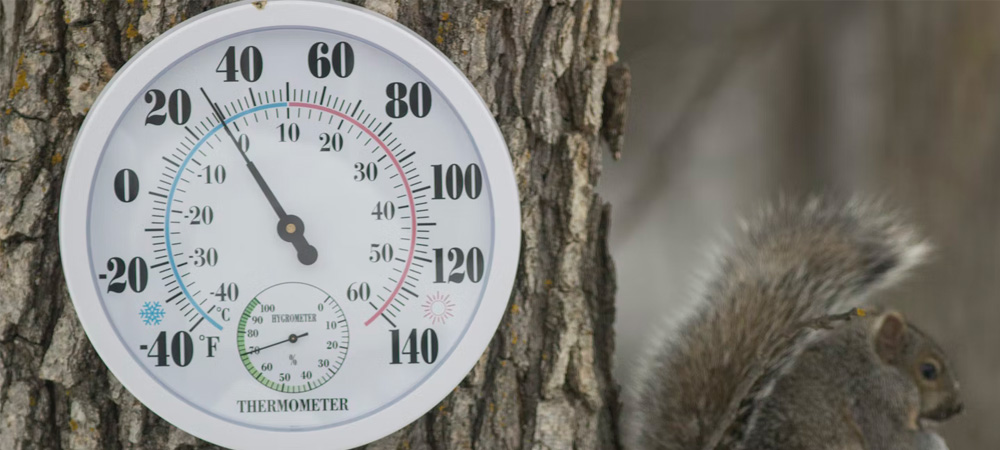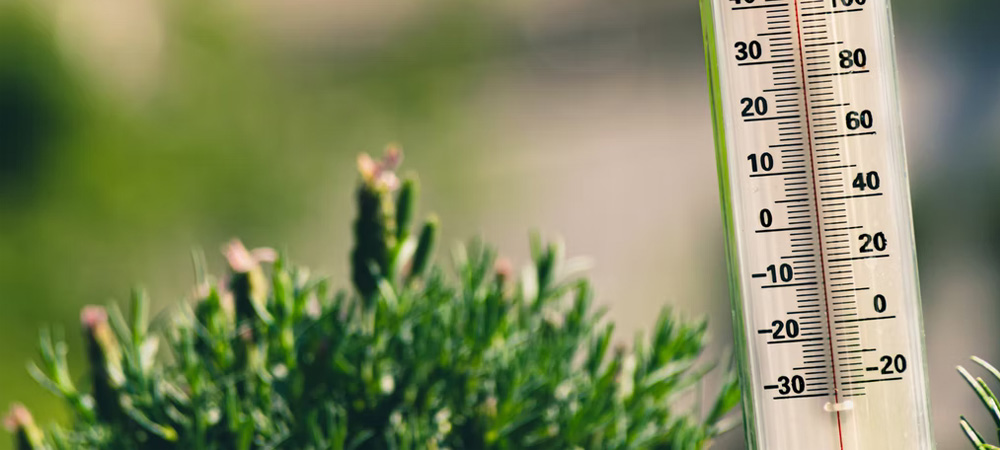How to Choose a Greenhouse Thermometer

If you want to keep your plants healthy, you’ll need to keep a very close eye on your greenhouse temperature. Plants often require various different temperatures, and it can be harder for essential processes like photosynthesis to go ahead if your space is too hot or cold for your plants. Using a thermometer can make it much easier for you to monitor the temperature of your greenhouse.
Should you go digital?
Digital displays make it easy for you to immediately find out what the temperature of your greenhouse is. However, there are many other popular kinds of thermometers on the market. Spirit thermometers work like old mercury thermometers, which are no longer in production. They have a glass tube that consists of liquid. Spirit thermometers can be very reliable, but it will take you longer to make sense of the data, and it’s common for human error to result in incorrect readings.
Digital displays have become incredibly popular for a host of reasons. These include the way they are so easy to interpret. Models are available that tell you various types of information as well as the temperature. Some models will give you information about humidity as well as the maximum and minimum temperatures over a specific time period. Some digital options also come complete with a backlit display so you can easily read them in the dark.

Why are maximum and minimum readings important?
Many digital thermometers give you minimum and maximum temperature readings. You may now be wondering why this is of use to you. Read on to find out. The temperature inside your greenhouse can fluctuate considerably, especially between the daytime and nighttime. This isn’t great for plant health, but it can be hard to tell how much the temperature has been changing when you’re using a standard thermometer. If you use a thermometer that tells you the minimum and maximum temperature over a 24-hour period, you’ll know whether the temperature has become too low or high. This can enable you to make decisions that boost plant health. These could include installing a greenhouse heater so you can maintain suitable temperatures.
Although some thermometers reset after a 24 hour period, you will need to manually reset others. Some of the more advanced thermometers on the market will also tell you the minimum and maximum humidity readings over a specific time period. Some plants need to remain within specific humidity levels.
What kinds of weatherproofing are available?
If a thermometer that you’re considering buying doesn’t mention weatherproofing on the packaging or product description, it’s best to presume it doesn’t come with this feature. If you’re looking for an effective, reliable and long-lasting thermometer, seek out one that’s at least described as ‘water resistant'. Digital thermometers can be impacted by weather-related issues as they are electronic. This is why it’s best to look for one that comes with water resistance.
Try to seek out a thermometer that comes with an IP rating. If a thermometer has this kind of rating, it means the manufacturers have tested it against dust and/or water ingress. If the thermometer has a rating of IP65 or above, it can be considered to be waterproof. This means it can withstand most weather conditions even if it can’t survive being covered in water. It should at least be able to withstand the dampness and humidity of a typical greenhouse.

Greenhouse Thermometers FAQs
Where should I position my greenhouse thermometer?
Don’t place your greenhouse thermometer in direct sunlight as this will give you incorrect readings. A good way to stop your thermometer from giving you erratic readings is to cover the top of it with foil. We advise you to place your thermometer around mid-height and to keep it away from heat sources, doors and windows. The temperature will be slightly higher above your thermometer and slightly lower below it. If you want to protect specific plants, put your thermometer near to these and look at the temperature in this area.
Is it best to purchase a digital greenhouse thermometer or a spirit thermometer?
You’ll find that a digital thermometer is quick and easy to read. The temperature will be displayed as a number, so there is no need to interpret anything. Digital thermometers also remove the margin for human error, which can be a problem with spirit thermometers. One drawback of digital thermometers is that they aren’t always waterproof enough, so water and humidity can get inside them. However, if you buy a digital thermometer that comes with a high waterproof rating you can minimise this issue.
How can I take readings in the dark?
If you need to take readings at nighttime, buy a digital thermometer that comes with a backlit screen. This will make it easier for you to read the temperature. Not every digital thermometer comes with a backlit screen. However, there should be a button that allows you to turn it on if you do have this kind of thermometer. Typically, the screen illuminates for a few moments before it goes dark again. This functionality is designed to help you save the battery. Buying a max/min thermometer will help you to check the maximum and minimum temperatures overnight. These can be reset when darkness falls. You can look at the readings in the morning to find out about the nighttime temperatures.
What temperature my greenhouse be?
We advise you to try and maintain a temperature of between 7 - 21°C (45 - 70°F). Your roof vents should provide most of the ventilation. Your side vents should only be used when the air outside becomes warmer.
How warm should my greenhouse seeds be?
Try to germinate your seeds in temperatures around 70-80 F. (21-27 C.) and make sure nighttime temperatures don’t fall beneath 50-55 F. (10-13 C.). Always monitor your greenhouse temperatures carefully.
How cold is too cold in a greenhouse?
Any temperature beneath for a hothouse and 45 degrees for a cold house can be regarded as too cold for a greenhouse.
Related Greenhouse Temperature Articles
Carry on reading more about how to control the temperature in your greenhouse with our related articles below:
- How to Adjust a Greenhouse Auto Vent
- How to Heat a Greenhouse Without Electricity
- How to Heat a Greenhouse
- Are Paraffin Heaters Safe?
- How to Insulate a Greenhouse
- How to Attach Bubble Wrap to a Greenhouse
- How to Shade a Greenhouse
- Internal vs External Shade for a Greenhouse
You can also learn what a greenhouse is here, and how to buy a greenhouse here.
 Author:
Author: